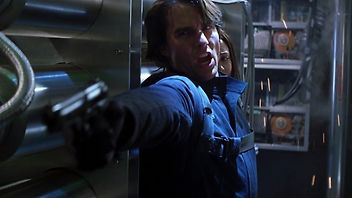Wes Anderson returns with The Phoenician Scheme, a film that feels like opening a drawer in your grandparents’ house you weren’t supposed to find, and discovering a perfectly ordered trove of secrets, maps, and faded correspondences written in beautiful cursive.
Yes, it’s symmetrical. Yes, the Futura font is back. Yes, everyone delivers their lines like they’re reading from an artfully melancholic telegram. But here’s the thing:
Repetition isn’t stagnation when you’re watching someone refine their language.
People like to say that every Wes Anderson movie is the same. That’s like saying every haiku is the same because it has 17 syllables. This isn’t laziness. It’s form. And in The Phoenician Scheme, that form becomes so distilled, so confident, it practically shimmers. This isn’t a filmmaker repeating himself out of safety - this is someone who’s spent decades tuning his voice like a violinist chasing a perfect note.
The plot? Something about a missing museum curator, a Cold War-era forgery ring, and a child cartographer with a stutter and a suspiciously accurate globe. It doesn’t matter. Or rather, it does, but not in the traditional way. Like his best work, the story feels like a fable being ed down, whispered between generations and scribbled in a hotel ledger for safekeeping.
And yes, it looks exactly like you expect. But that’s because Wes Anderson has developed his own cinematic dialect, so why would you ask him to speak in another language?
The thrill of watching The Phoenician Scheme isn’t about surprise. It’s about watching an artist speak fluently in the world only they could have built. And if that world feels familiar, it’s not because you’ve seen it before. It’s because he’s finally showing it to you more clearly than ever.
The Phoenician Scheme is showing now with screenings every day this week at The Grosvenor Picture Theatre, book here: Film | Grosvenor Picture Theatre

